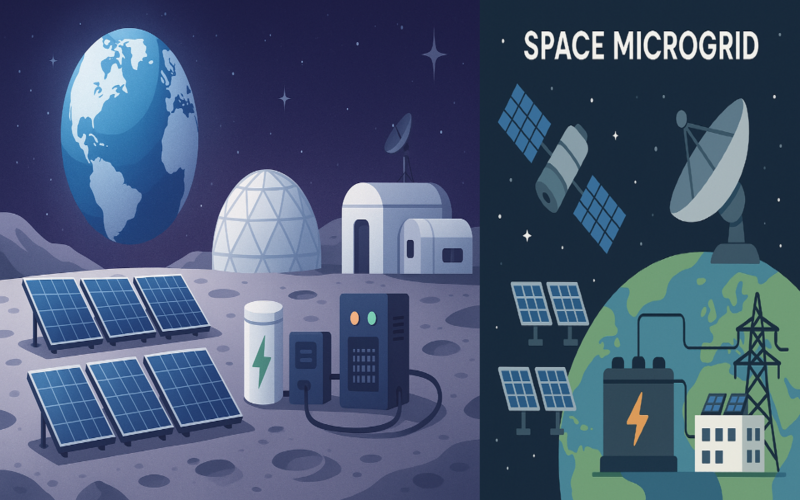Space Microgrids: Powering Humanity Beyond Earth

As humanity prepares to establish long-term habitats on the Moon and Mars, one critical challenge remains: how to generate and manage power in deep space. The solution lies in a cutting-edge technology — space microgrids.
A space microgrid is a compact, self-sufficient energy system designed to operate independently under extreme space conditions. Like terrestrial microgrids, they integrate:
- Power generation: Solar panels, fuel cells, or compact nuclear reactors
- Energy storage: Advanced batteries or hydrogen storage systems
- Power distribution and control: Smart electronics and AI-driven management
Built to autonomously generate, store, and distribute energy, space microgrids are crucial for spacecraft, lunar bases, rovers, and future Martian settlements. In space, where unpredictability is the norm, traditional power systems fall short. Microgrids offer:
- Reliability: Reduces the risk of power failures during critical missions
- Scalability: Grows alongside the expansion of space infrastructure
- Autonomy: Operates independently despite delayed Earth communication
- Resilience: Withstands harsh conditions like lunar nights and Martian dust storms
In short, space microgrids are the backbone of sustainable off-world living.
Leading Space Microgrid Initiatives:
-
NASA Artemis Program: Developing modular energy systems for lunar bases
-
Kilopower Project: Creating compact fission reactors for deep space missions
-
ESA’s Moon Village: Designing interconnected microgrids for international lunar settlements
These technologies are not only vital for science missions but will also lay the foundation for human colonies beyond Earth.
At Presidency School of Engineering, students at the Department of Electrical and Electronics Engineering (EEE) are contributing to this revolutionary field. Their research spans:
- Smart power control algorithms
- High-efficiency energy storage solutions
- AI-based fault detection and optimization
- Space-environment microgrid simulations
Through interdisciplinary work across electrical engineering, aerospace, AI, and material science, our students are shaping the future of space exploration — and redefining terrestrial energy systems as well.
In conclusion, space microgrids are not just power systems; they are enablers of life, discovery, and expansion beyond Earth. As we reach for the stars, these silent systems will fuel humanity’s boldest missions. The future of power isn’t just renewable or smart — it’s interplanetary.
Written by,
Dr. Markala Karthik
Assistant Professor, Dept. of Electrical & Electronics Engineering
Presidency School of Engineering













 Rajanukunte, Yelahanka, Bengaluru, Karnataka, Pin: 560119, India
Rajanukunte, Yelahanka, Bengaluru, Karnataka, Pin: 560119, India
 +91 9022092222
+91 9022092222